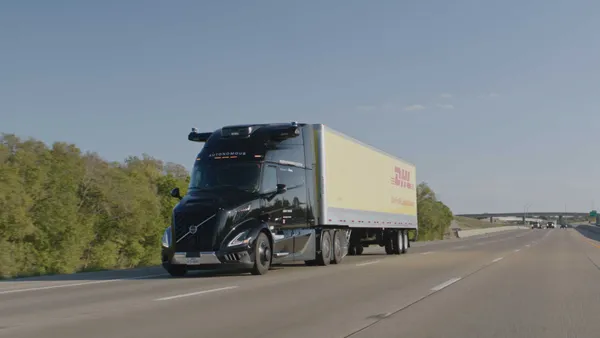Supply chains are constantly changing as new rules, technologies, resources and market trends transform operations. Here's a skim of the week's indexes, technology announcements, expansions and M&As from around the web.
In Case You Missed It:
- There are 5 types of supply chain risk — and numerous ways to manage them.
- Union workers replied to CEO Hunter Harrison's critique of CSX staff.
- Uber Freight expanded its service to 6 more U.S. states.
Market Snapshot:
The past year has been an economic success story, as the manufacturing sector has grown for nearly 11 consecutive months, according to the July 2017 Manufacturing ISM Report on Business.
"Six profitable months in a row. First time since 2007," one maker of Fabricated Metal Products told the Institute for Supply Management.
Such continued growth has manufacturers optimistic, as greater profits allow them to once more consider capital and labor investments to increase productivity.
"Strong demand for our products has our manufacturing plants focusing on uptime and production," according to a nonmetallic mineral product manufacturer. However, another respondent to the monthly survey, who makes machinery, said clients were waiting till the last minute to order equipment.
Perhaps the signals of a strong economy seem too good to be true. The Federal Reserve Bank of Philadelphia's July 2017 Manufacturing Business Outlook Survey found the region's manufacturing index fell 8.1 points last month, marking the potential for slower growth. However, respondents to that survey noted cyclical factors affect production, lowering the outlook during midsummer and winter months.
Regardless, both indices show an increase in supply chain lead times, as supplier deliveries slow and unfulfilled orders rise. To address this, the sector will have to invest in more equipment and labor. Fortunately, it appears the sector is preparing to do just that.
Technically Speaking
Amazon just won a patent for a shipping label with an attached parachute, DC Velocity reported Wednesday. This particular shipping label will be used for drone-delivered packages, and activates the parachute when the package is released from a drone. While the freight and logistics industries buzz with autonomous truck development, Amazon is still exploring other options to automate and accelerate the shipping process, in line with the larger trend to simplify e-commerce supply chains.
DC Velocity also reported earlier this week that R2 Logistics launched a new TMS software platform that allows managers to track supply chain operations in real-time, as well as adjust shipping preferences and optimize routes.
According to American Shipper, FourKites will partner with 3GTMS to provide a better freight tracking platform with real-time tracking capabilities for shippers, and a Hong-Kong based startup will use blockchain to streamline shipping transactions.
This shows that supply chain simplification and acceleration is a trend across multiple industries, not just e-commerce: freight and shipping are investing heavily in new tech to streamline supply chains and increase visibility, first to cut costs and then to increase profit margins and improve customer experiences.
Breaking Ground
Last week the Lafayette Airport in Louisiana hosted a grand opening ceremony for two new on-site cargo facilities for UPS and FedEx, KATC.com reported. The UPS facility is 3,931 square feet and includes nine loading docks, while the FedEx facility is 7,401 square feet with another nine loading docks.
Delta Airlines also introduced a new air cargo control tower to Atlanta last week that will track air and truck shipments, and provide data on capacity and warehouse management and rebooking, among other functions, according to DC Velocity.
These initiatives directly correlate with the increase in air freight traffic over the past six months. H1 2017 saw the strongest growth since H1 2010, and industry analysts expect growth to continue steadily as e-commerce requires an increased amount of shipping and handling services.
Also keeping pace with the e-commerce trend and demands for speedy fulfillment, several retailers announced they will open new warehouses soon: Brooks Running will open a 400,000 square foot distribution center near Indianapolis, and plans to hire 132 new employees by 2023, according to the Indianapolis Business Journal; Campbell Soup broke ground on a $44 million, 740,000 square foot warehouse in Findlay, OH on Tuesday according to The Courier, planning to hire 200 within the next year; and Amazon opened its first warehouse in Australia, at approximately 78,740 square feet, according to Supply Management.
Mergers & Analysis
Rising consumer demands and improvements in technology make up a perfect set of conditions for an uptick in M&A, Freight Waves recently reported. In fact, 2017 has already seen a few major deals come to light, with much more to come.
The blog references the Knight Transportation and Swift Transportation merger earlier this year, creating a trucking powerhouse based in Arizona. In addition, Daeske's acquisition of Missouri-based The Steelman Companies, its third recent purchase, highlights the growing wave.
Yet, the acquisitions of the future may not be as similar to those of years past, as equipment falls in value to automation. Purchases of asset-heavy companies may help a company expand its geographic footprint, but what when the carrier already boasts an international presence?
XPO Logistics achieved this with its 2015 acquisition of Con-way, and now, CEO Bradley Jacobs is eyeing new acquisitions. The executive last week said he had earmarked $8 billion for acquisitions, enough money to buy out a top-20 trucking company. However, he also clarified his intent: XPO would be pursuing asset-light companies, perhaps indicating the company was eyeing a technology startup or brokerage firm.
When the news of a deal does break, it will be indicative of the company's new growth strategy. Now that it has cemented a position among the top 3PLs and a global presence, is its next step to be an innovator as well?





















